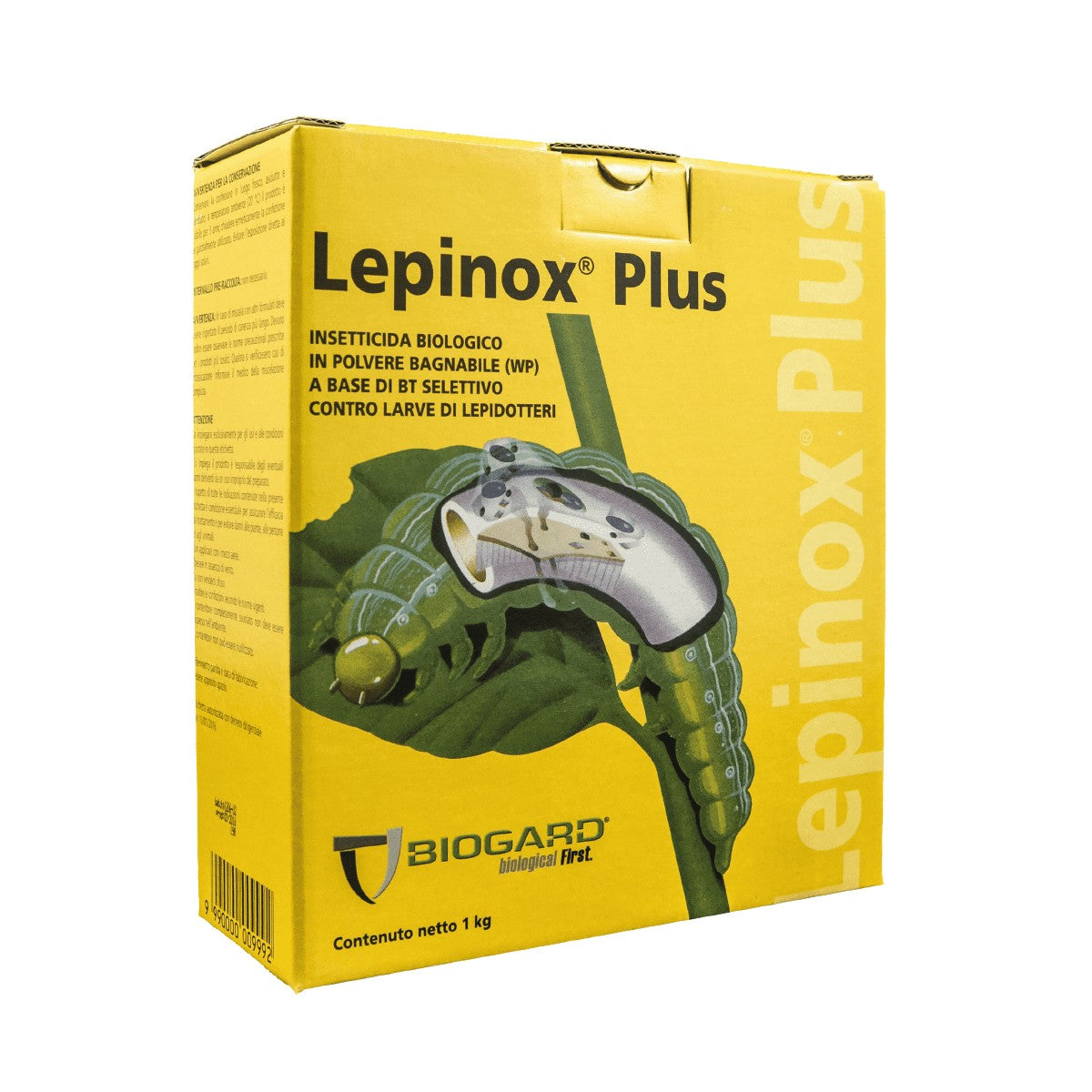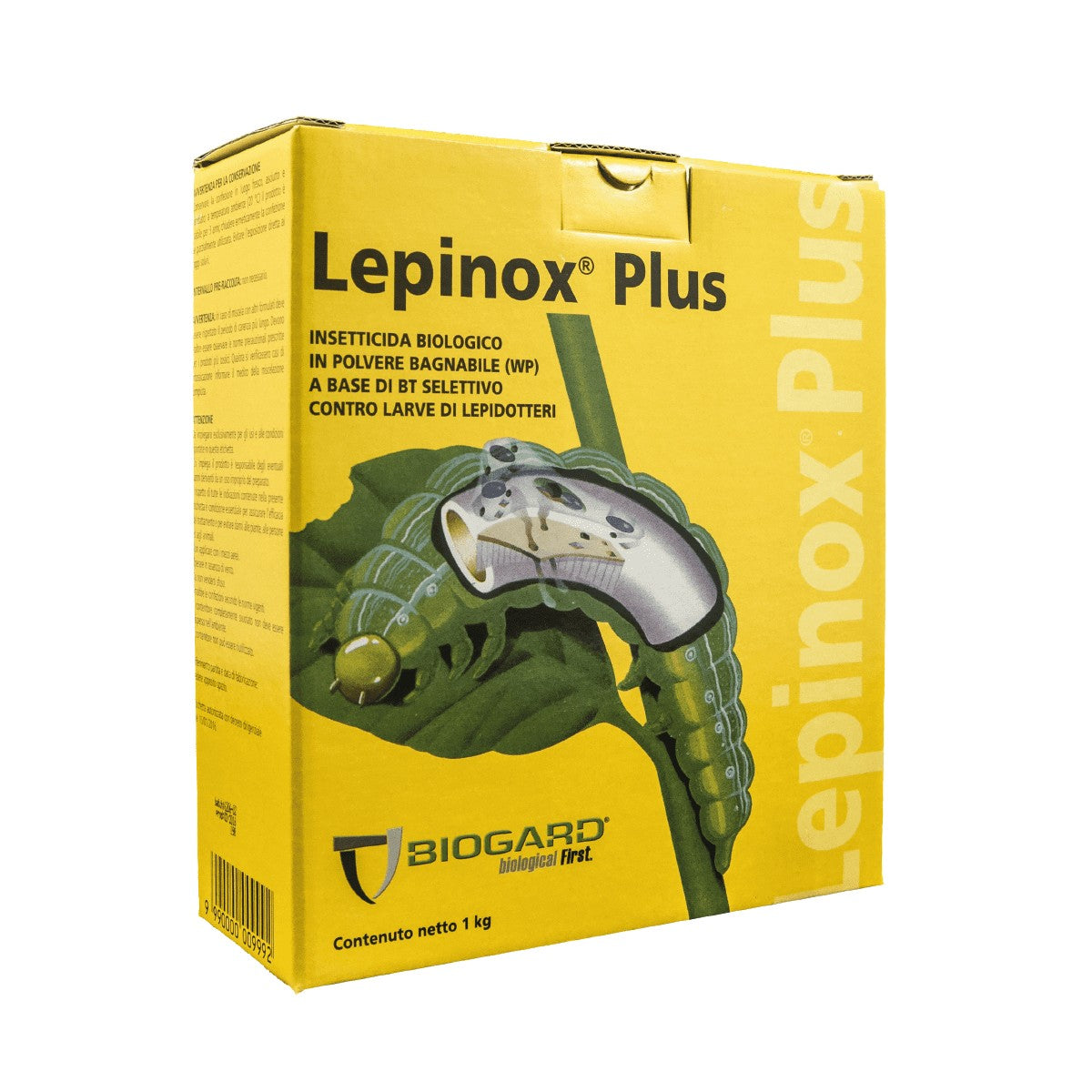1
/
of
1
biogard
Lepinox Plus 6grms
Lepinox Plus 6grms
Regular price
€3,00 EUR
Regular price
Sale price
€3,00 EUR
Unit price
/
per
Taxes included.
Couldn't load pickup availability
Lepinox Plus contains Bacillus thuringiensis subspecies kurstaki of strain EG 2348;
this is the result of a natural process of genetic improvement (bacterial transconjugation)
which has allowed us to collect the positive characteristics of several strains in one.
The strain EG 2348 of B.thuringiensis kurstaki was included in Annex I
(list of active substances allowed for the preparation of plant protection products in Europe)
on 01/05/2009 and is owned by Biogard, Division of CBC (Europe) S.r.l.
Lepinox Plus is a WP formulation with a high concentration of active ingredient (37.5%)
which allows a significant increase in efficacy against Lepidoptera larvae that are more difficult to control.
This is also due to a substantial improvement in the production processes and in particular in the substances used in the formulation process;
the final result that Biogard has obtained is that of a formulation that shows an optimal efficacy against the main species of noctuids and some carpophages,
especially when the treatment is directed against the larvae of the first ages.
Among the latter, the applications against Tuta absoluta (tomato moth) were very interesting, also with a view to proper management of the active ingredients available.
B.thuringiensis kurstaki is a gram-positive, mobile and ubiquitous bacterium in all soils. The peculiarity of B. thuringiensis is to have the ability,
under certain conditions, to produce a parasporal body of protein origin (called crystal)
inside the spore containing delta-endotoxin, a toxic protein for various species of insects, especially Lepidoptera.
Once ingested by the larvae, the protein crystal reaches the middle intestine,
where it breaks down into other protein units thanks to the action of specific enzymes due to the effect of the alkaline pH.
WARNINGS:
Preferably carry out the treatments in the evening or early in the morning, checking that the pH
of the water used remains between 6 and 8; do not mix with very alkaline products (for example, Calcium Polysulphide).
this is the result of a natural process of genetic improvement (bacterial transconjugation)
which has allowed us to collect the positive characteristics of several strains in one.
The strain EG 2348 of B.thuringiensis kurstaki was included in Annex I
(list of active substances allowed for the preparation of plant protection products in Europe)
on 01/05/2009 and is owned by Biogard, Division of CBC (Europe) S.r.l.
Lepinox Plus is a WP formulation with a high concentration of active ingredient (37.5%)
which allows a significant increase in efficacy against Lepidoptera larvae that are more difficult to control.
This is also due to a substantial improvement in the production processes and in particular in the substances used in the formulation process;
the final result that Biogard has obtained is that of a formulation that shows an optimal efficacy against the main species of noctuids and some carpophages,
especially when the treatment is directed against the larvae of the first ages.
Among the latter, the applications against Tuta absoluta (tomato moth) were very interesting, also with a view to proper management of the active ingredients available.
B.thuringiensis kurstaki is a gram-positive, mobile and ubiquitous bacterium in all soils. The peculiarity of B. thuringiensis is to have the ability,
under certain conditions, to produce a parasporal body of protein origin (called crystal)
inside the spore containing delta-endotoxin, a toxic protein for various species of insects, especially Lepidoptera.
Once ingested by the larvae, the protein crystal reaches the middle intestine,
where it breaks down into other protein units thanks to the action of specific enzymes due to the effect of the alkaline pH.
WARNINGS:
Preferably carry out the treatments in the evening or early in the morning, checking that the pH
of the water used remains between 6 and 8; do not mix with very alkaline products (for example, Calcium Polysulphide).
Share


